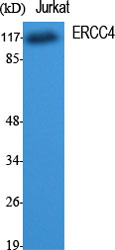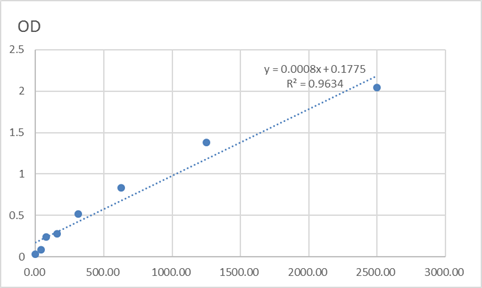Total ERCC4 Cell-Based Colorimetric ELISA Kit
- Catalog No.:KA3432C
- Applications:ELISA
- Reactivity:Human;Mouse
- Gene Name:
- ERCC4
- Human Gene Id:
- 2072
- Human Swiss Prot No:
- Q92889
- Mouse Swiss Prot No:
- Q9QZD4
- Storage Stability:
- 2-8°C/6 months
- Other Name:
- DNA repair endonuclease XPF (EC 3.1.-.-) (DNA excision repair protein ERCC-4) (DNA repair protein complementing XP-F cells) (Xeroderma pigmentosum group F-complementing protein)
- Detection Method:
- Colorimetric
- Background:
- cofactor:Magnesium.,disease:Defects in ERCC4 are a cause of XFE progeroid syndrome [MIM:610965]. This syndrome is illustrated by one patient who presented with dwarfism, cachexia and microcephaly.,disease:Defects in ERCC4 are the cause of xeroderma pigmentosum complementation group F (XP-F) [MIM:278760]; also known as xeroderma pigmentosum VI (XP6). XP-F is an autosomal recessive disease characterized by hypersensitivity of the skin to sunlight followed by high incidence of skin cancer and frequent neurologic abnormalities.,function:Structure-specific DNA repair endonuclease responsible for the 5-prime incision during DNA repair. Involved in homologous recombination that assists in removing interstrand cross-link.,similarity:Belongs to the XPF family.,subunit:Heterodimer composed of ERCC1 and XPF/ERCC4. Interacts with EME1.,
- Function:
- nucleotide-excision repair, DNA damage removal, telomere maintenance, double-strand break repair via homologous recombination, recombinational repair, DNA catabolic process, endonucleolytic, DNA metabolic process, DNA repair,nucleotide-excision repair, nucleotide-excision repair, DNA incision, 3'-to lesion, nucleotide-excision repair, DNA incision, 5'-to lesion, double-strand break repair, DNA catabolic process, DNA recombination, response to DNA damage stimulus, macromolecule catabolic process, response to radiation, response to UV, response to light stimulus,response to abiotic stimulus, UV protection, negative regulation of macromolecule metabolic process, negative regulation of organelle organization, telomere maintenance via telomere shortening, telomere organization, regulation of telomere maintenance, negative regulation of telomere maintenance, regulation of homeostatic process,
- Subcellular Location:
- Nucleus . Chromosome . Localizes to sites of DNA damage. .
- June 19-2018
- WESTERN IMMUNOBLOTTING PROTOCOL
- June 19-2018
- IMMUNOHISTOCHEMISTRY-PARAFFIN PROTOCOL
- June 19-2018
- IMMUNOFLUORESCENCE PROTOCOL
- September 08-2020
- FLOW-CYTOMEYRT-PROTOCOL
- May 20-2022
- Cell-Based ELISA│解您多样本WB检测之困扰
- July 13-2018
- CELL-BASED-ELISA-PROTOCOL-FOR-ACETYL-PROTEIN
- July 13-2018
- CELL-BASED-ELISA-PROTOCOL-FOR-PHOSPHO-PROTEIN
- July 13-2018
- Antibody-FAQs



